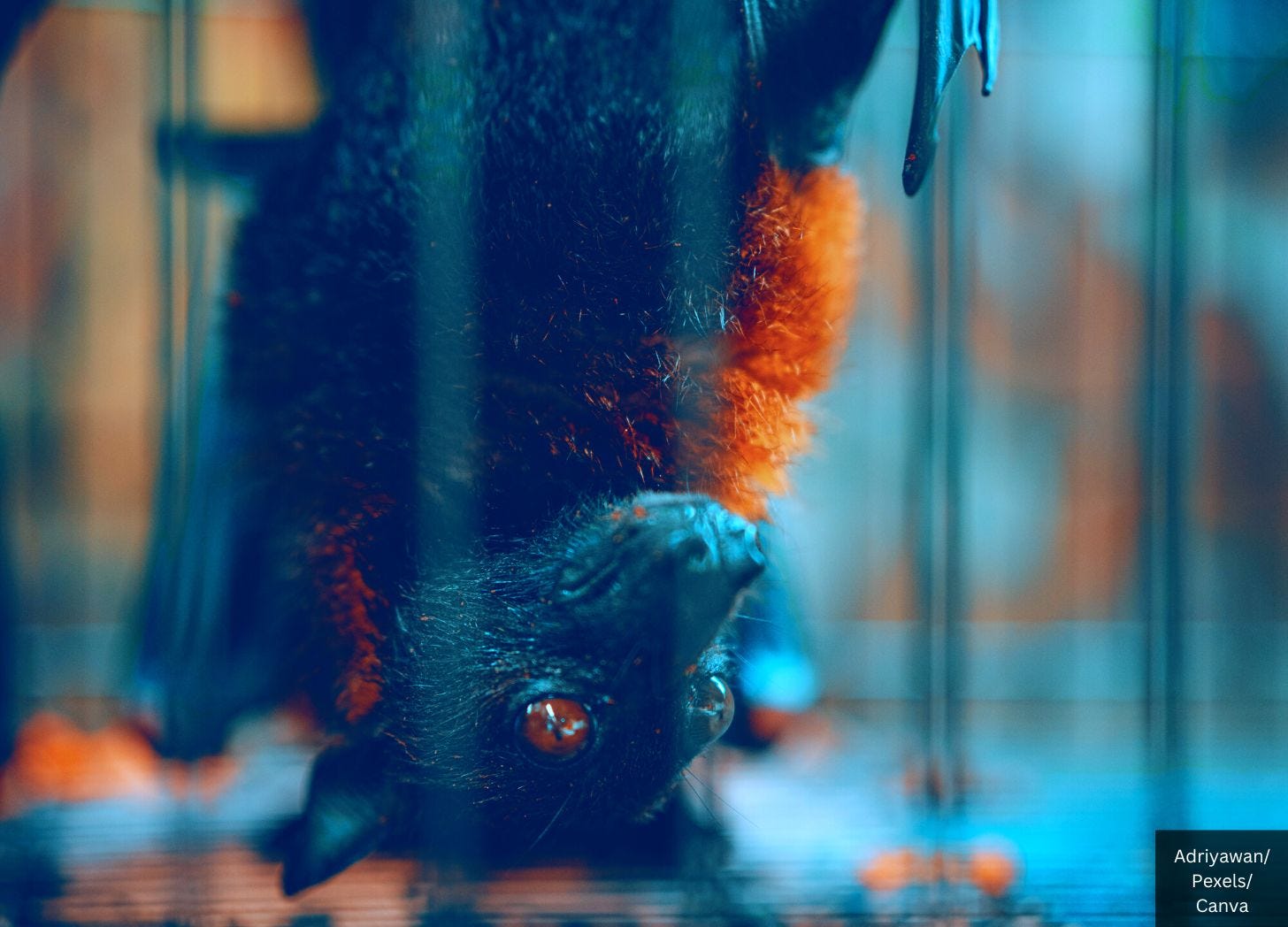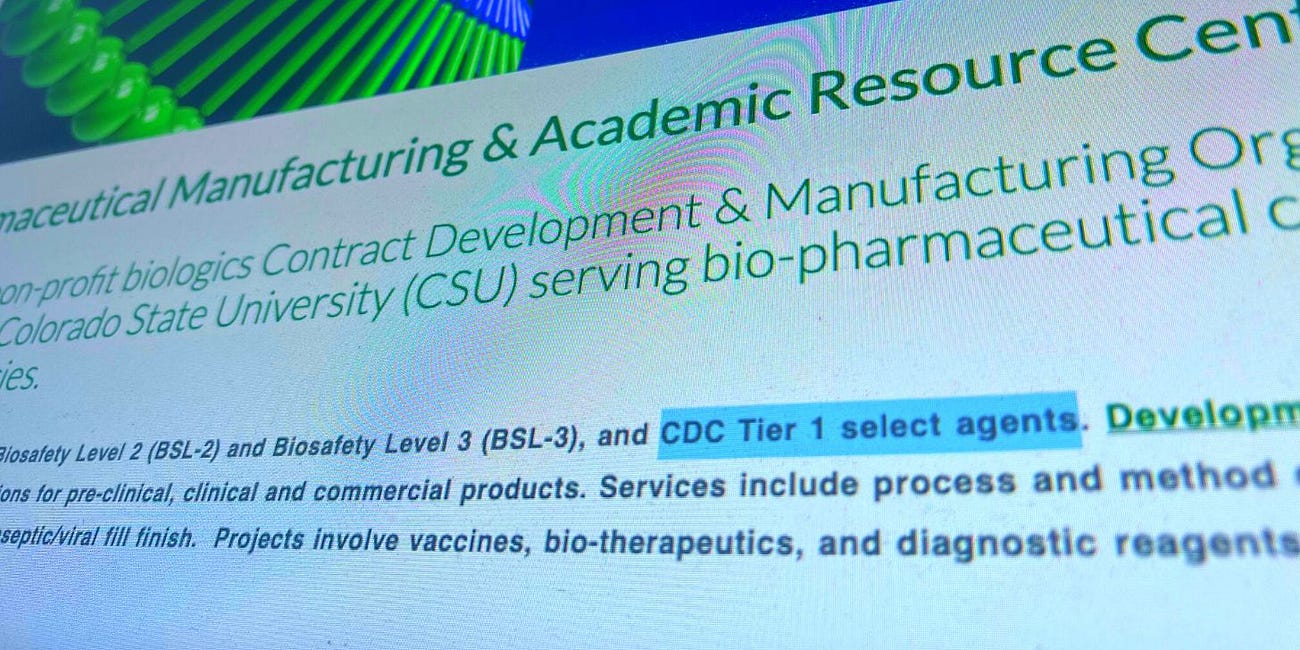New Bat Lab Proposed Despite CDC's Past 'Serious Safety Violations While Working with Bioterror Pathogens' in Colorado
U.S. senator raises "lab leak" concerns as Fort Collins CDC facility with checkered safety past linked to Colorado State University, location of bat lab.
A new taxpayer-funded laboratory is being built in Fort Collins, Colorado that will import bats from around the world and experiment on dangerous diseases, potentially including Ebola, Nipah virus, and COVID-19.
Follow Jon Fleetwood on Instagram @realjonfleetwood / Twitter @JonMFleetwood
The $12-million project is a collaboration between the U.S. National Institutes of Health (NIH), Colorado State University (CSU), and EcoHealth Alliance (EHA), the group at the center of the COVID lab leak theory.
It was EcoHealth’s Dr. Peter Daszak who channeled millions of American taxpayer dollars to fund risky gain-of-function research on bats at the Wahn Institute of Virology (WIV) in Wuhan, China.
The WIV laboratory is argued to be ground zero for the coronavirus pandemic.
Researchers at the new facility will study “zoonotic pathogens,” which can spread between animals and humans.
Meanwhile, healthcare workers at Denver Health, just 65 miles south of Fort Collins, have been inoculated with a live Ebola vaccine that can “shed” onto (infect) others, according to the package insert. Hospital officials said the vaccinations were “preventative measures in case of a future outbreak.”
Reacting to news of the new bat research facility, Iowa Senator Joni Ernst (R) warned, “We cannot allow any batty experiments of pandemic potential to be unleashed on our own shores.”
“Americans have suffered enough from Fauci-funded risky research, which is why I am working to defund EcoHealth that funneled taxpayer dollars to the Chinese state-run Wuhan Lab,” she added. “The world cannot afford another lab leak, especially one on U.S. soil or near our military bases.”
In May 2016, USA Today revealed that a subset of labs at the U.S. Centers for Disease Control and Prevention’s (CDC) Fort Collins infectious disease facility “had their federal permits secretly suspended in recent years for serious safety violations while working with bioterror pathogens.”
The CDC “kept even Congress in the dark about the Fort Collins incident and some others—despite an oversight committee asking the agency in 2014 for a list all incidents at CDC labs since 2002 involving bioterror pathogens found in unauthorized areas,” the new outlet reported.
The CDC claimed the information was “inadvertently omitted.”
Follow Jon Fleetwood on Instagram @realjonfleetwood / Twitter @JonMFleetwood
In May 2013, there was a “possible biological exposure” at CDC’s Fort Collins lab, according to a printout from the agency’s Medgate tracking system, USA Today also reported.
However, the CDC blacked out all words within a description of what happened, citing a 2002 bioterrorism law.
The main source of the injury was “Insects arachnids (spiders, ticks, scorpions etc.),” while a secondary source was listed as “Select Agent.”
“The CDC wouldn’t answer questions about what happened in the incident or what pathogen was involved,” per USA Today.
An August 2014 letter CDC Director Tom Frieden sent to the chairman of the House Energy and Commerce Committee did not include the Fort Collins incident when it responded to the committee’s questions following a hearing on CDC safety lapses.
“The letter listed 10 other incidents, but not the incident involving specimens of Japanese encephalitis virus found in an unauthorized CDC lab in Fort Collins,” USA Today reported. “Although the virus was considered a ‘select agent’—the government’s term for certain viruses, bacteria and toxins that have the potential to be used as bioweapons—at the time of the incident, it was delisted in 2012.”
The CDC, which like the NIH works under the U.S. Department of Health and Human Services (HHS), operates its Division of Vector-Borne Diseases (DVBD) in Fort Collins.
The Fort Collins DVBD site is the only major CDC infectious disease laboratory outside of Atlanta, Georgia.
Colorado State University’s proximity to the CDC’s DVBD has led to collaborations between the two stretching back to 1967, including the formation of the Infectious Disease Supercluster, involving 150 CSU faculty members from seven colleges.
The CDC’s DVBD consolidated on the CSU campus in 1967 “to enhance collaboration between CSU and CDC scientists.”
A January 2017 report from the Coloradoan revealed documents obtained by Freedom of Information Act (FOIA) request showing details about incidents at the CDC’s Fort Collins DVBD involving “biological hazards.”
Per the Coloradoan:
Two of the Fort Collins incidents involved “select agents,” pathogens included on a federal list of potential bioterror pathogens. The list includes pathogens such as those that cause anthrax, Ebola, plague or certain avian or reconstructed flu virus strains.
The CDC’s poor safety record in Fort Collins and deep ties with CSU raise questions about whether the university’s new bat lab will pose a risk to Americans or even the world.
It’s worth mentioning that in 2014, CSU researchers were helping develop an Ebola vaccine for the U.S. Military, albeit because the university had “equipment that can make vaccines without using live Ebola virus.”
“BioMARC, a high-containment biopharmaceutical facility operated by CSU, is manufacturing the vaccines for the U.S. Department of Defense for use in human clinical trials,” the report explained.
CSU received the $2 million subcontract through the Department of Defense’s Medical Countermeasures Systems Joint Vaccine Acquisition program
“That program develops and stockpiles vaccines and countermeasures that can be used to protect soldiers, but the research ultimately will benefit civilians.”
Follow Jon Fleetwood on Instagram @realjonfleetwood / Twitter @JonMFleetwood
New Colorado Bat Lab Location CSU Confirmed to Develop ‘CDC Tier 1 Select Agents’ Like Ebola Despite University's Denials
As health workers in Denver, Colorado receive doses of a “shedding” and live virus-containing Ebola vaccine, concerns have been raised over a new bat research facility to be built just up the road, at Colorado State University (CSU) in Fort Collins.



